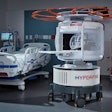
The No Surprises Act (NSA) has been in effect in the U.S. for a few weeks, and many practices are just now beginning to make adjustments to accommodate the law. The level of proactive involvement might be different for practices working solely in a hospital system from those with a private office or imaging center.
 Sandy Coffta.
Sandy Coffta.Every practice will be affected by this law, even those working in states with comprehensive balance billing laws, because the NSA applies to self-funded Employee Retirement Income Security Act (ERISA) plans that are generally exempt from state laws.
Much of the focus has been on the balance billing and dispute resolution provisions of this law, and our previous articles have described the independent dispute resolution (IDR) process. However, balance billing is only one aspect of the No Surprises Act. It also contains patient transparency requirements that each radiology practice must follow.
Hospital practice
The balance billing portion of the NSA will come into play most often when patients are seen in the hospital under emergency situations where the radiology practice has no choice but to accept an out-of-network (OON) patient. However, the rules do not change once the patient is stabilized (nonemergency) and continues to receive care from the out-of-network radiologist because radiologists and other ancillary providers may not use consent waivers that would allow them to balance bill the patient. The same is true for scheduled services at an in-network hospital if the radiologist is out-of-network, provided the services are covered by the patient's insurance plan.
The NSA provides that the radiologist must first bill the patient's insurance company. After an initial payment is received, the practice can decide whether to pursue a negotiation to alter the amount. The only amount that may be collected from the patient is the same as what they would have paid if the radiologist was in-network.
The patient transparency requirements come into play for certain patients scheduled for nonemergency services in the hospital who must be made aware of the insurance participation status of the hospital and the radiology group. A good faith estimate (GFE) must be provided to the following groups:
- Uninsured patients
- Self-pay patients
- Insured patients who state that they do not intend to bill their insurer
- Insured patients whose insurance plan does not cover the service to be rendered
It is the hospital's responsibility as the scheduling entity to provide the good faith estimate. For 2022, the hospital does not have to include information about the radiologist's charges; however, since it will be required in the future, practices could begin working with their hospitals now and be ready in advance of the requirement.
Private office/imaging center
Radiologists in a private practice (nonfacility) setting have more control over the scheduling of patients, and probably already have policies in place to handle out-of-network patients. Good business dictates that the source of payment be discussed with the patient in advance of the service, preferably at the time the appointment is scheduled.
Out-of-network or self-pay patients should be given information about their out-of-pocket cost for the services, and payment arrangements should be made in advance. Practices that have such policies in place will have no trouble conforming with the GFE requirements.
The specific good faith estimate requirements are as follows:
- A GFE is required for patients who are uninsured or self-pay. This includes a patient who has insurance but has stated that they do not wish to file a claim for the service, or for a service not covered by their insurance.
- The GFE must be provided to patients once the service is scheduled.
- If the appointment is at least 10 days away, then the practice has three business days to issue the GFE.
- If the appointment is at least three days away, then the GFE must be issued within one business day.
- If the appointment is less than three days away, no GFE is required. However, a patient may request a GFE, and the provider has three days to issue it.
- The GFE must reflect the total cash price of the scheduled services, less any discounts given by the practice such as a self-pay discount.
- The GFE must include an itemized list describing the services, diagnosis (the International Classification of Diseases or ICD) codes, procedure (the current procedural terminology or CPT) codes, and the associated charges.
The GFE is intended to be only an estimate of the services expected to be furnished; it is not a contract to provide services. It must include information about the dispute resolution process that is available to the patient.
Public disclosure notice
Regardless of where the radiology group practices, the NSA requires that it posts a disclosure on its website, in a location that is on a searchable home page. The same information must be prominently displayed in a location where patients schedule, check-in, or check-out for appointments. In addition, a written notice (limited to one page, double-sided) must be given to all patients. A model disclosure notice describing this requirement is available from the U.S. Centers for Medicare and Medicaid Services (CMS).
Conclusion
The NSA prohibits the balance billing of out-of-network patients by radiologists for emergency and nonemergency services at an in-network hospital. It also imposes notice and disclosure requirements that practices must be aware of.
This is not a comprehensive review of all the provisions of the No Surprises Act, such as the details of the dispute resolution procedures available to radiologists and patients.
Sandy Coffta is the vice president of client services at Healthcare Administrative Partners.
The comments and observations expressed are those of the author and do not necessarily reflect the opinions of AuntMinnie.com.



















